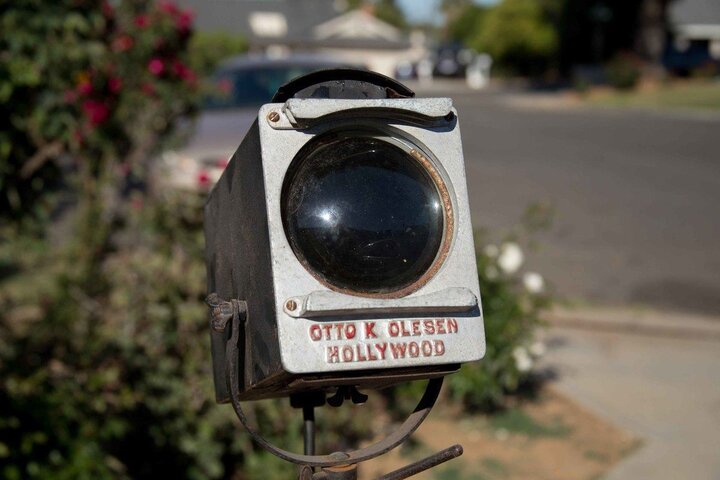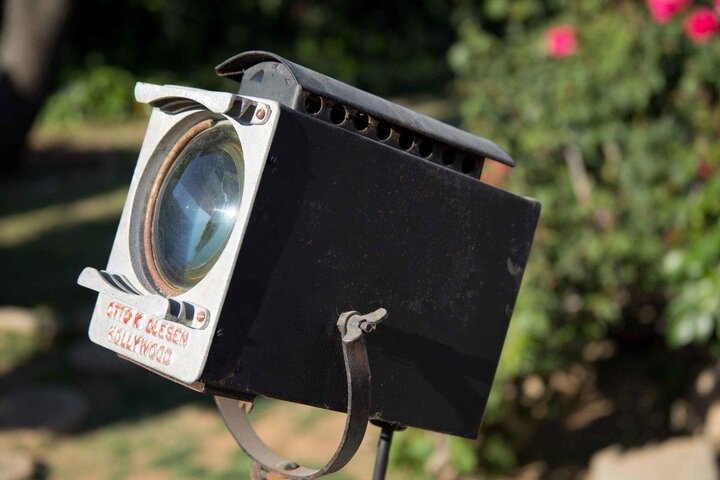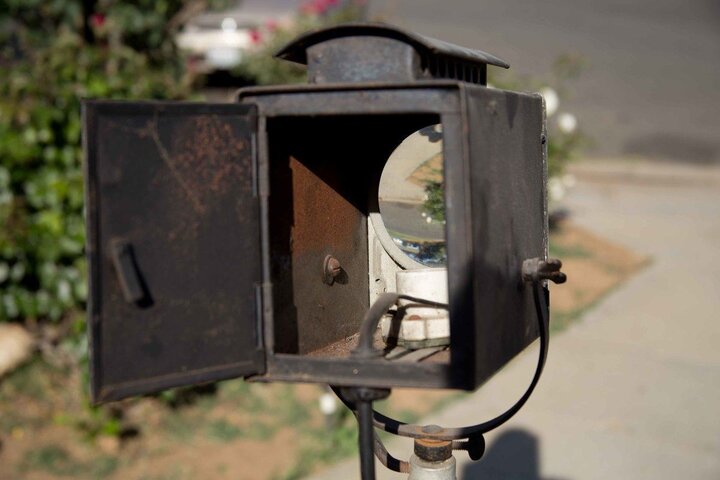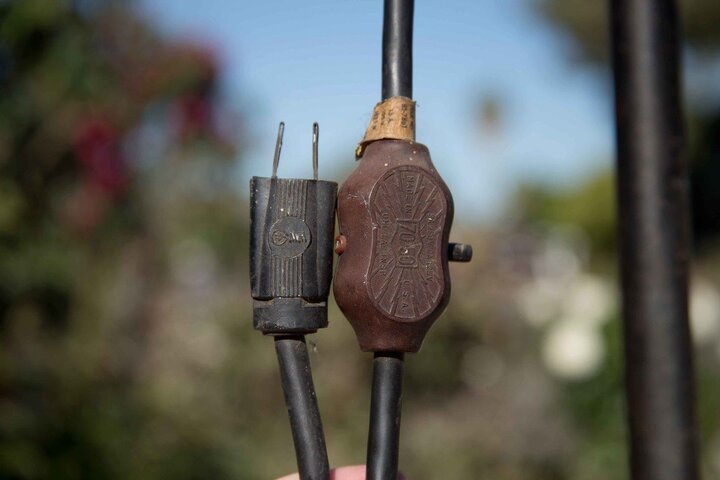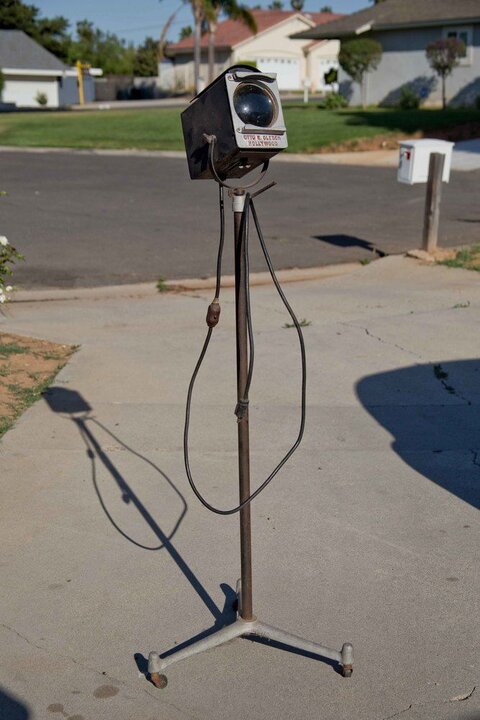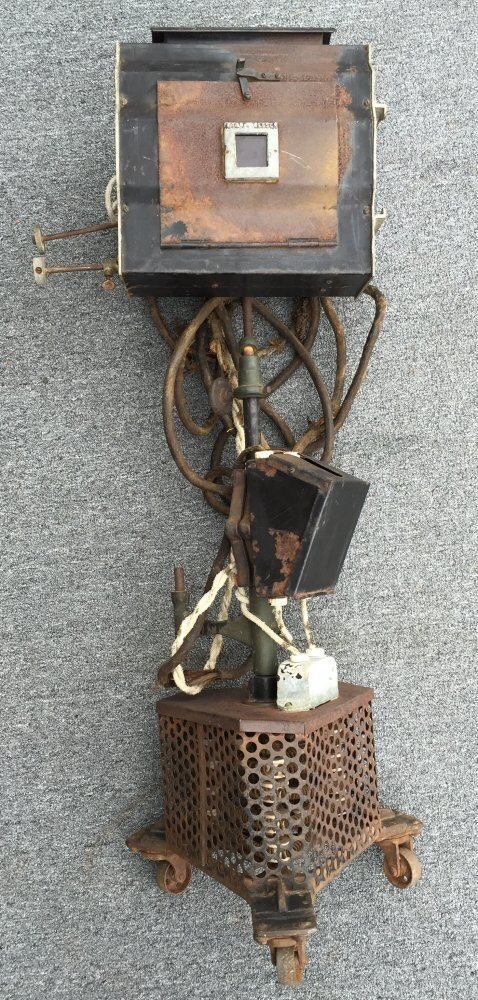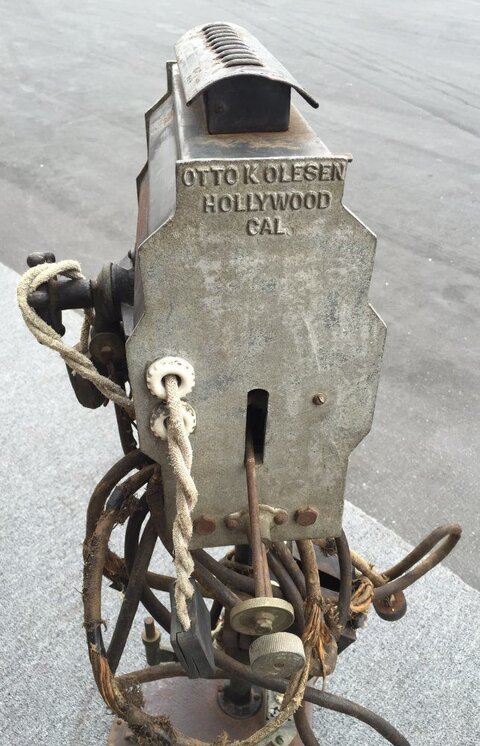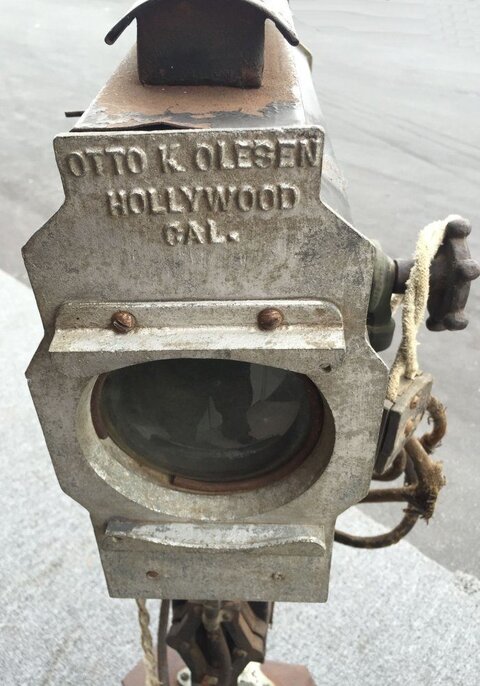Yes box spot, but studio box spot. I suspect by proportions of the fasteners that it's only a 4.1/2"
lens? The hood on it is overbuilt for need as per studio gear. I have no notes of this brand in my brand hisory notes - though do remember a much later like 80's or 90's catalogue from them, but also not even a web link from them. I don't normally do studio gear, just kind of have it come to me.
Given studio gear normally lags behind
stage gear in design - the studio gear is normally over-built in not needing to improve much, I would think this box spot could have been used into the early 50's and designed perhaps in the say about 1920's if not slightly earlier. It's trying to combine a PC with a box spot for venting.
Important to figure out further is what specific wattage
globe lamp is in it? Also what it says about the description or what lamp
socket it's using in could be medium screw or two other types possible especially for studio gear in the period.
The stand and
switch are certainly old - within the period if not earlier in that period but more for me refines it back to the 20's
thru the say later 30's in not much more.
On value, obviously I won't be bidding on it, and it's value with
switch and castered stand is going to be over my budget anyway.
This isn't the optimum brass stand to have which is oil/spring mechanism from like the 1910
thru early 20's period. Got one, it's cool and while castered , this type in much smaller and less decorative is probably worth less than the non-castered version of the really old brass stand with much wider cast arms. Stands alone can often be very valuable, in researching my own, but this one isn't the say $750-1K stand in value alone.
On the other
hand, it's not just a C'stand to mount the light, it's clearly an older
caster stand say 20's
thru late 40's in not being an expert on studio or Olesen gear.
Complete box spot studio light, assuming working and with stand to some rich home owner that might use it and electricute oneself by way of using something with really old wiring... into the say $500.00 range complete I would think at best in starting at perhaps $90.00 and going up from there. You can go over that, but I really think it only a semi-old box spot spot studio light on a stand. the stand and
switch add value in a non-safe wiring thing, but at least origional thing.
"loft" look... Never searched for
stage lighting or other terms I use in that before, and probably won't if that concept is to homeowners wanting a prop.
Overall, the light is probably worth in the $20
thru 75.00 range alone at best, but given the stand and
switch, I would add $100.00 to that value as is and in good condition - but not proper or safe to be using modern wiring condion as a stipulation.
Fascinating
fixture, thanks for the photos of it in learning more about old
fixture designs and brands.





